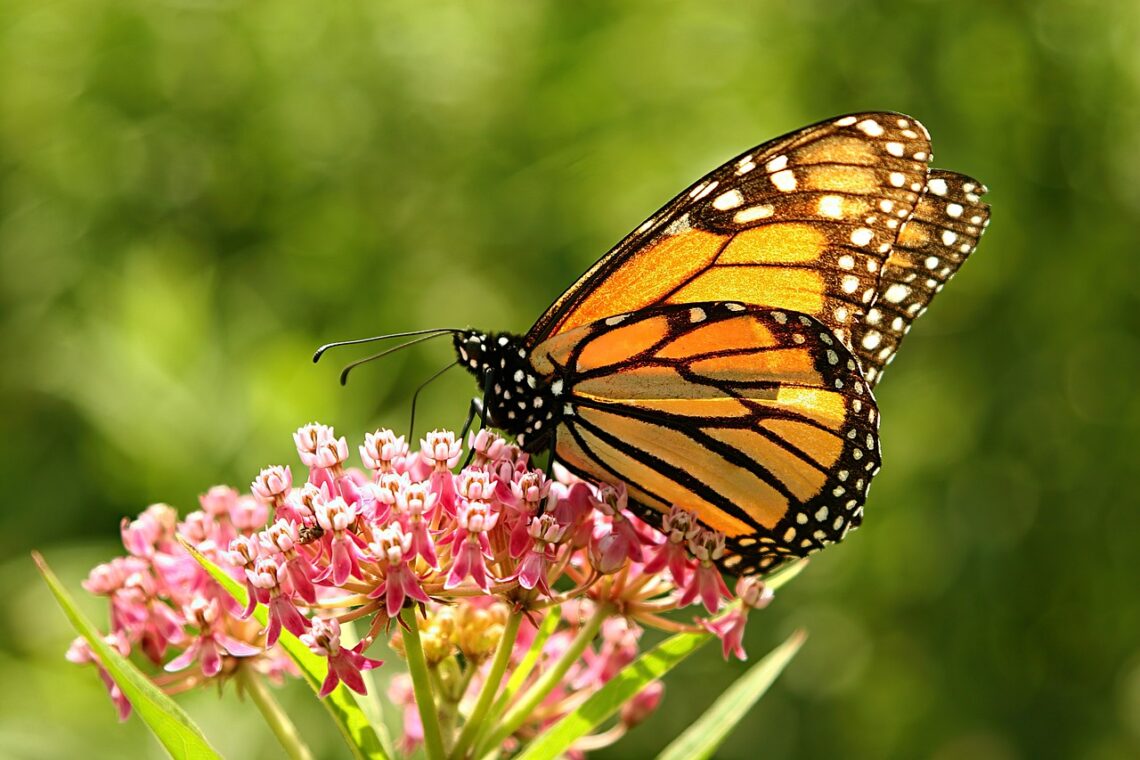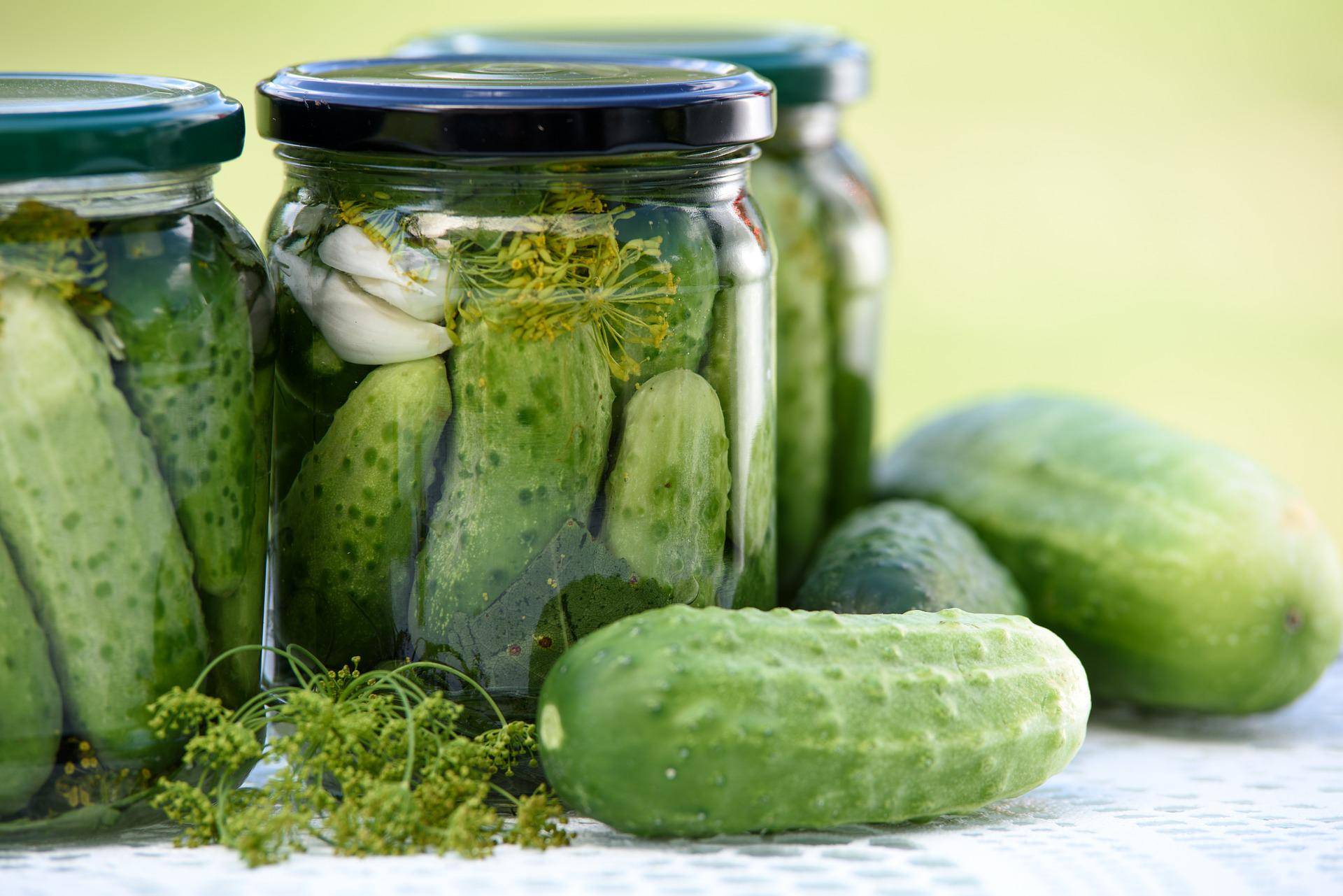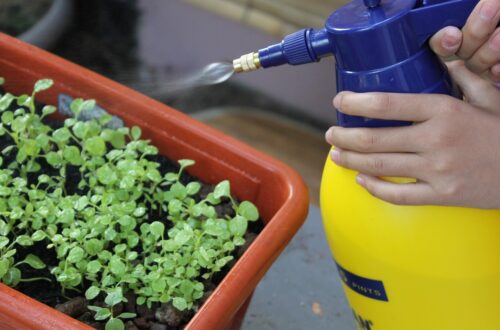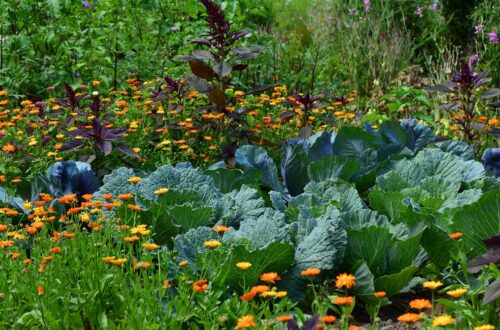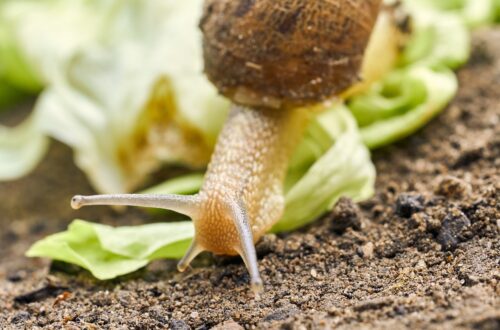Even urban gardeners can help monarch butterflies by growing a small space monarch butterfly garden!
Monarch butterflies are essential pollinators that look like flying jewels as they flit and flutter through flower gardens in summer. However, monarch populations have been on the decline in recent years due to a number of factors, and backyard gardeners are doing what they can to help monarchs make a comeback. In this guide, you’ll find easy step-by-step instructions for growing a monarch butterfly garden, plus other handy tips for how you can help monarchs in your community and beyond.
Affiliate disclosure: As an Amazon Associate, I may earn commissions from qualifying purchases.
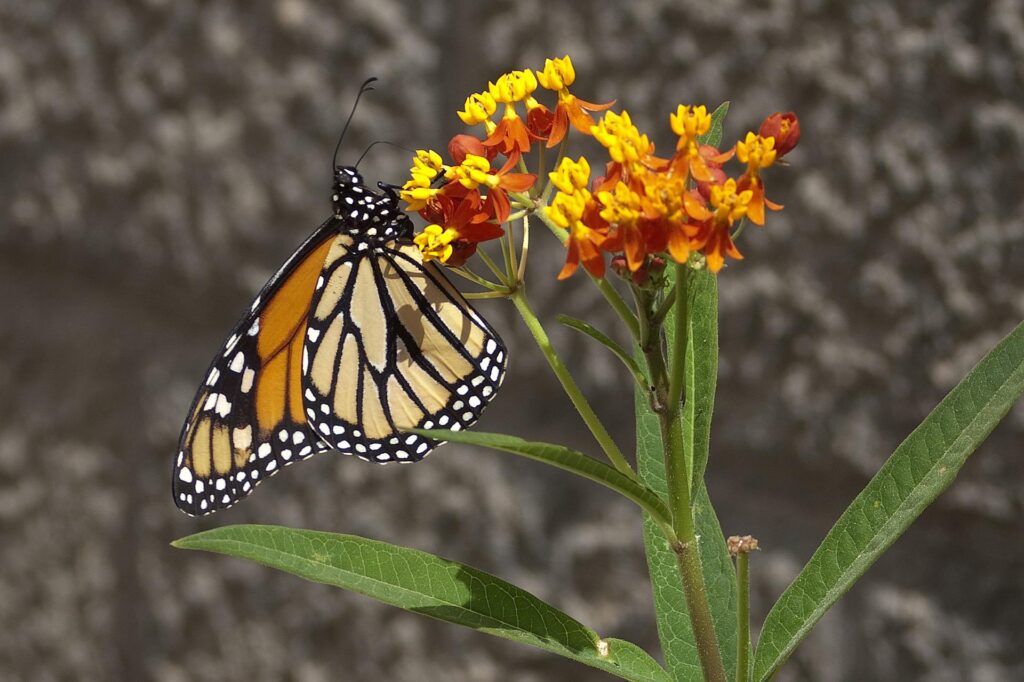
Why are Monarch Butterfly Populations Declining?
Monarch butterflies and other pollinator populations have been declining in recent years due to a number of factors, including habitat loss, the overuse of pesticides and climate change.
Habitat loss and deforestation take away the food and shelter resources that monarchs need to survive, while climate change is directly affecting the plants monarchs depend on, including milkweed. On top of that, most pesticides are indiscriminate and they’re as likely to affect pollinators as the pest insects they were designed for!
This is bad news for the pollinator themselves, but it also has implications for other species, including humans. After all, approximately 75% of crops depend on pollinators and the future of our food security is closely intertwined with the future of pollinators.
But all is not lost. Right now, today, there are steps that individuals and small communities can take that can directly help monarch butterflies and other pollinators. I’ll discuss a few different solutions in this guide, but first, let’s explore one of the best ways to help monarchs: creating a monarch habitat garden!
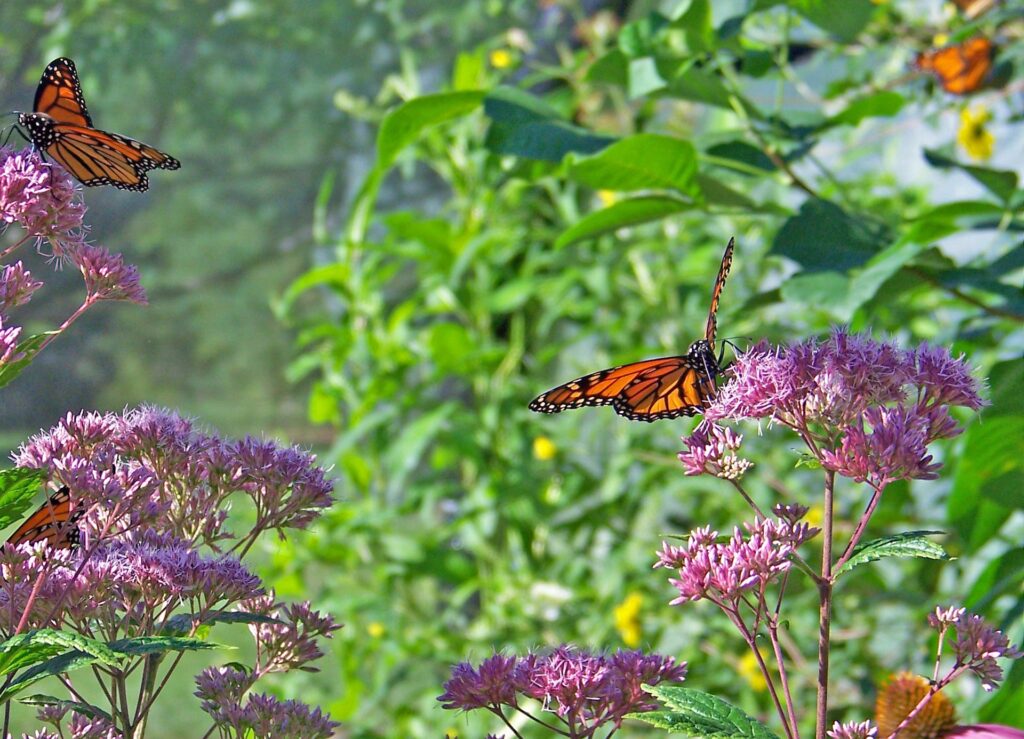
How to Grow a Monarch Habitat Garden
Habitat gardens don’t need to be big, although large gardens obviously offer more resources to pollinators. However, if you just have a small outdoor space (or a balcony!), you can still do a lot to support monarchs. Remember, a single window box or a potted plant can counteract habitat fragmentation and make it easier for monarchs to navigate urban spaces where food resources are scarce!
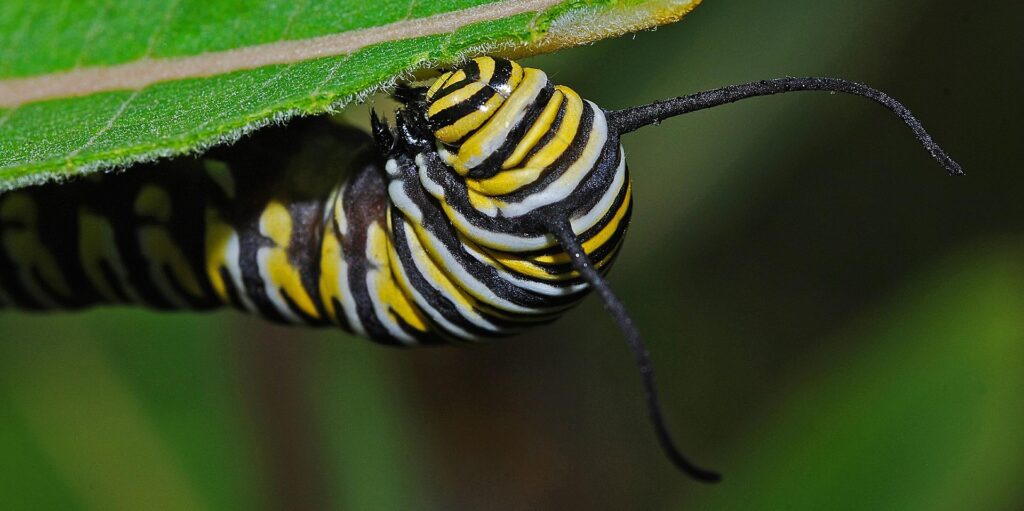
Step 1: Grow native milkweed.
Planting native milkweed is one of the best ways to help monarchs, hands down. That’s because milkweed is THE host plant for monarch butterflies and monarchs only lay their eggs on milkweed plants. After hatching, monarch caterpillars only eat milkweed while they’re developing and, if there’s no milkweed around, those baby monarchs won’t have anything to nibble on!
The Xerces Society estimates that it takes one milkweed plant to feed one monarch caterpillar, so it’s a good idea to plant as much milkweed as you can. Ideally, monarch habitat gardens should have at least 10 milkweed plants, but if you only have room for a potted plant or two, that still helps! If you’re just working with a balcony garden, you can grow a single milkweed plant in 10 to 12” diameter pot.
There are a number of different milkweed varieties to choose from and they all benefit pollinators; however, the best milkweed for monarchs are milkweeds that are native to your growing region. There are a number of handy websites that will help you find native milkweed by state, but some popular options include:
- Common milkweed
- Swamp milkweed
- Aquatic milkweed
- Purple milkweed
- Poke milkweed
- Prairie milkweed
- Showy milkweed
- Butterfly weed
- Whorled milkweed
Tip: When purchasing milkweed, buy your plants from nurseries that only use organic growing methods and don’t be afraid to ask if plants are sprayed with neonicotinoids or other pesticides. If you can’t find any local nurseries with organic milkweed plants, you can also grow your own plants from seed.
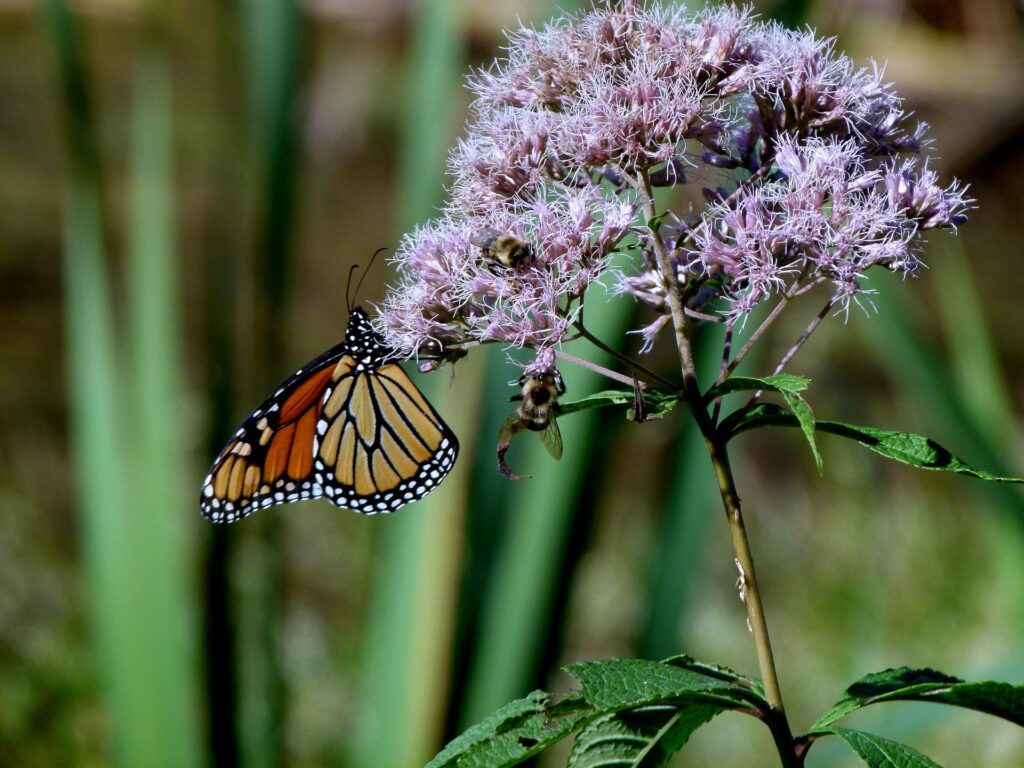
Step 2: Sow nectar-rich flowers.
While you’ll only find monarch eggs on milkweed, adult monarchs aren’t picky eaters and they will forage for nectar from a wide variety of plants. Native plants are the best options for monarchs, but it’s also important to seek out plants that are grown organically, as well as plants that bloom at different times of the year and produce different flower colors.
Aside from growing milkweed, some other plants that attract monarch butterflies include:
- Joe Pye weed
- Yarrow
- Lavender hyssop
- Bee balm
- Black eyed Susan
- Phlox
- Lantana
- Goldenrod
- Purple coneflower
- Liatris
- Sage and salvias
- Verbena
- Mistflower
- Mexican sunflower
- Asters
Tip: Sowing plants in clusters of 3 or more makes plants easier for pollinators to see and butterflies won’t need to travel as far while foraging!
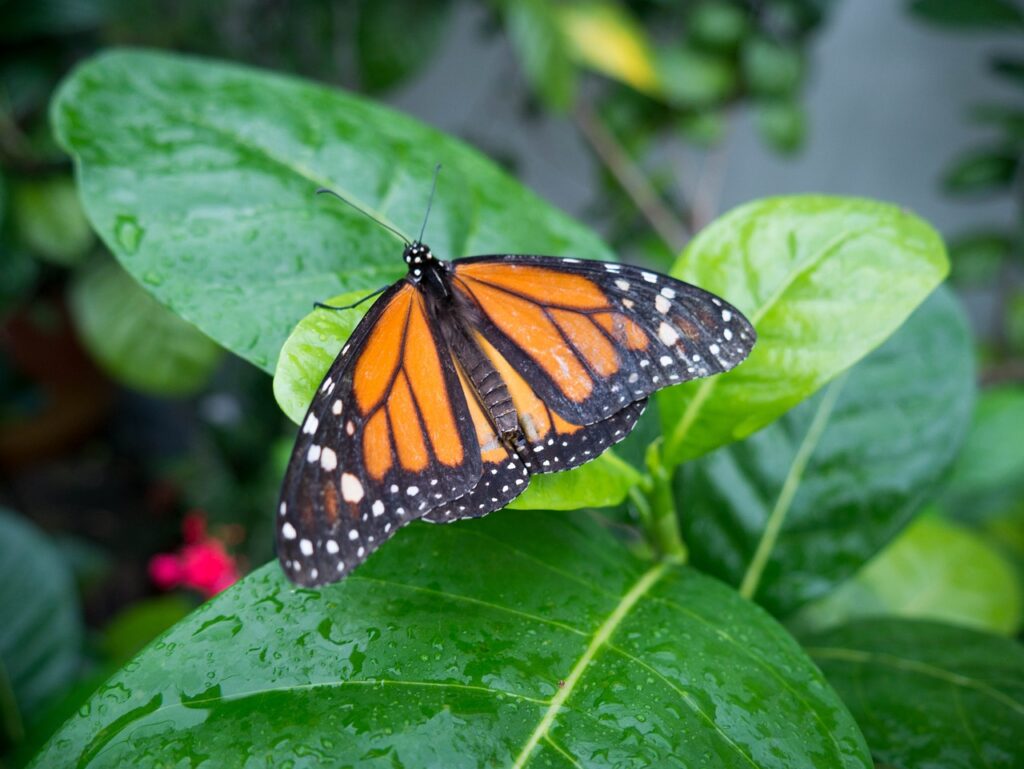
Step 3: Add a water feature.
Like other critters, monarch butterflies need fresh water… especially on sultry summer days. But bird baths are often too deep and they can pose a drowning risk for delicate butterflies. However, there is an easy fix: use a small butterfly waterer instead!
You can purchase a butterfly waterer online or you can make your own DIY butterfly puddling pool by adding some clean gravel or pebbles to a small, shallow dish (like a terracotta plant saucer or an old pie tin). Then, position the waterer in a full sun location that’s near milkweed and clean the waterer out daily to keep monarchs healthy. If you have a drip line irrigation system, you can place an emitter inside your butterfly waterer to provide a slow and steady drip of water as well!
Tip: If you want to take your butterfly puddler to the next level, sprinkle in a small amount of salt, organic compost, aged manure, or some cut up fresh fruit (like apples or bananas). This will provide extra nutrients to butterflies as they drink.

Step 4: Provide shelter.
Monarch butterflies need a safe place to sleep and to hide out during inclement weather. But sheltering spots also provide a secure location for pupation – which is when monarch caterpillars transform into butterflies!
In the wild, you’re most likely to find a monarch butterfly chrysalis on trees, vines and shrubs that are within 40’ of a patch of milkweed. But you may also find a monarch cocoon in other strange locations, like under the eaves of your home or in an overturned flower pot. Growing native evergreens and deciduous trees, like oaks, willows and hackberries, as well as woody-stemmed plants and vines will help monarchs feel secure in your landscape.
Tip: If you want to give monarchs even more options, you can also install a butterfly house. If you’re lucky, you may find a monarch chrysalis inside someday!

Step 5: Go organic.
Of course, no habitat garden would be complete without ensuring the safety of the pollinators you’re trying to attract… and the best way to do that is to keep your garden as organic as possible.
Following good garden maintenance practices, like crop rotation and autumn garden cleanup, can naturally reduce plant pests and diseases. You can also install floating row covers and fruit protection bags, implement companion planting and experiment with more pollinator-safe products (like organic insecticidal soap sprays). Just keep in mind that even organic products, like neem oil, can harm pollinators if they’re applied improperly or sprayed directly on plant flowers that monarchs may feed from.
Tip: If you’d like to make your garden even more attractive to monarchs, grow milkweed and nectar-rich plants in a sheltered location that’s protected from strong winds. You may also want to place large, flat stones in sunny locations and keep them damp with your garden hose. This will provide the perfect hang out spot for monarchs and other butterflies too!
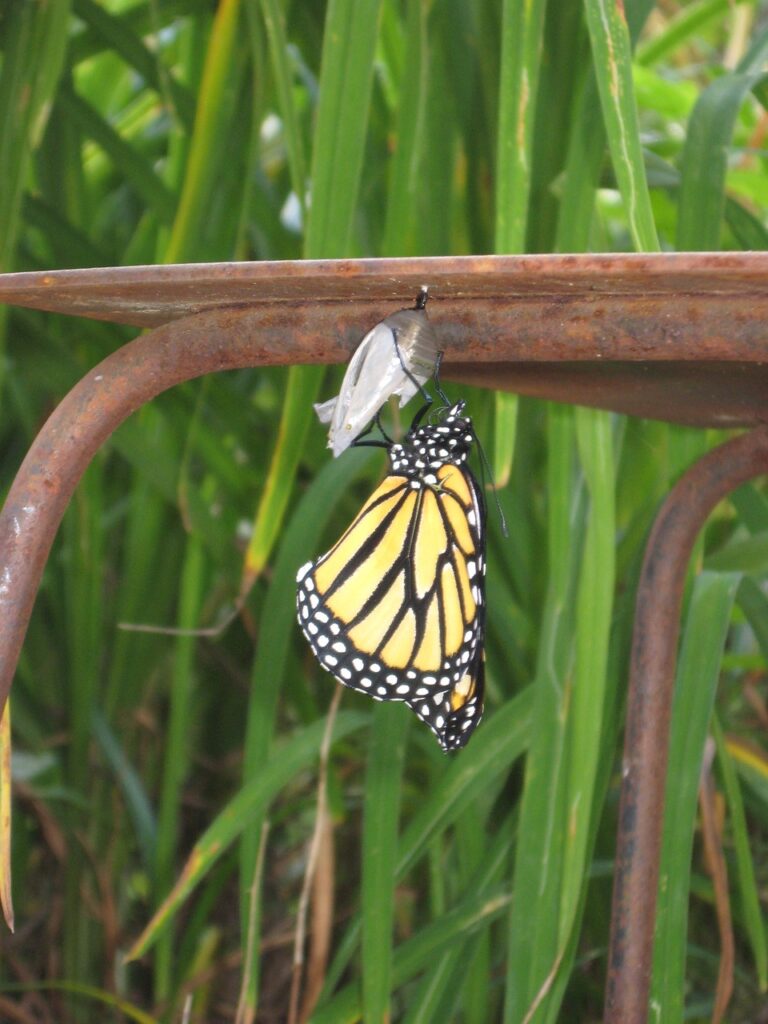
Other Ways to Help Monarchs
Although growing a butterfly habitat is one important step towards helping monarch butterflies, it’s not the only option. Here are a few more suggestions!

Spread the word.
While one monarch waystation can help a few monarchs, a bunch of pollinator habitats can do even more! Telling your family about the benefits of organic gardening or inviting friends over to enjoy your pollinator habitat garden may inspire others to make their own monarch habitat. You can also:
- Write a letter to your local newspaper
- Post on social media (and share guides like this one!)
- Start a petition to change HOA rules
- Teach a class at your local adult education center
- Host a native plant sale
- Get your garden certified as a wildlife habitat and post a “Wildlife Habitat” sign to let others know what you’re doing
- Host a garden party so your community can see how lovely pollinator gardens can be!
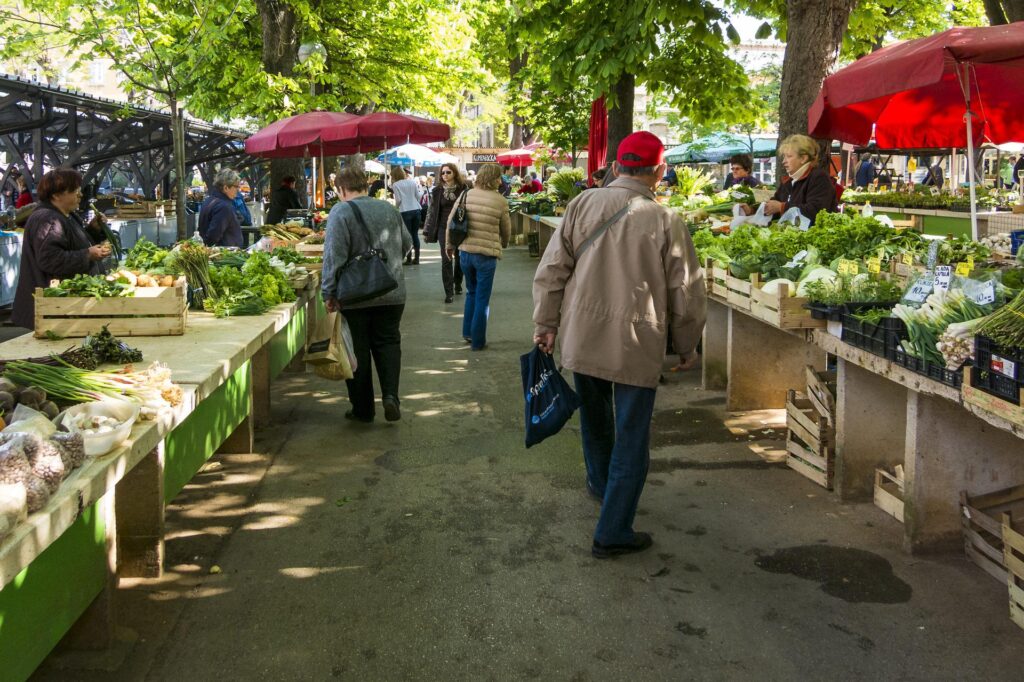
Vote with your dollar.
Large scale agriculture is one of the leading causes of habitat destruction, which is why supporting local farms is so important! Shopping locally and from companies that have a strong commitment to environmentally friendly practices can also help shift the tide in monarchs’ favor.
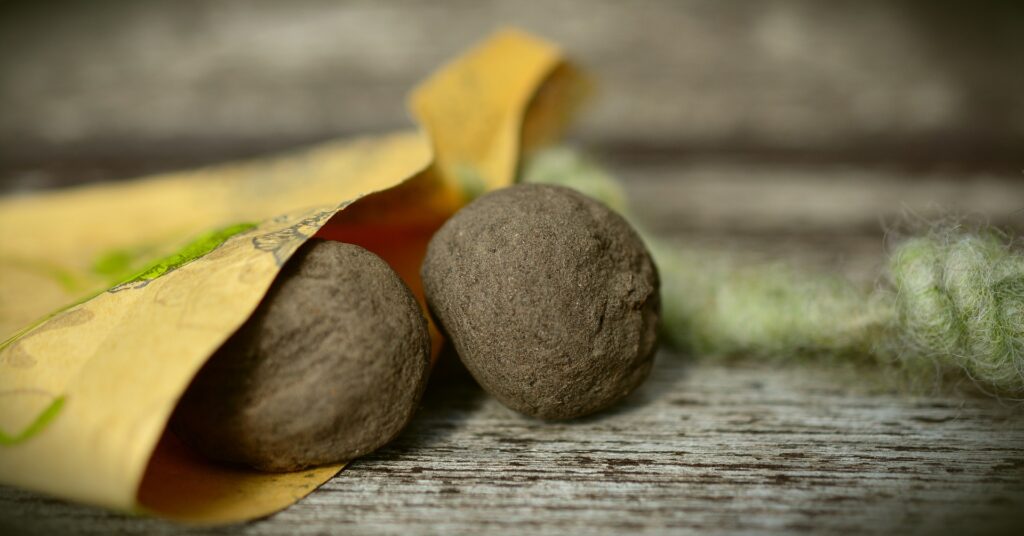
Make milkweed seed balls.
Milkweed seed balls are an easy way to plant milkweed on the go and it can help create monarch-friendly habitats in vacant lots and barren spaces where plants aren’t growing. Just make sure to check with local laws and ordinances before throwing seed balls around and don’t throw them onto private property without permission.
If you want to make your own milkweed seed balls, follow these quick steps:
- Mix 1 cup of native milkweed seeds (or other monarch-friendly seeds) with 5 cups of organic compost and stir in 2 to 3 cups of clay powder.
- Add water, mixing with your hands until everything begins to clump together.
- Mold the mixture into balls and allow the balls to dry in a sunny space on a baking sheet.
- To plant, throw the seed balls onto bare soil (rake leaves away if you can!) and wait for milkweed plants to sprout!
Tip: Most varieties of milkweed require a period of cold stratification to germinate (a cool, moist period followed by a warmer period of time), so it’s best to throw milkweed seed balls around in late fall, after the ground freezes solid.

Frequently Asked Questions About Protecting Monarch Butterflies
What type of milkweed is best for monarchs?
All native milkweed varieties will benefit monarchs and other pollinators, but studies have found that swamp milkweed (Asclepias incarnata) and common milkweed (Asclepias syriaca) inspire monarchs to lay more eggs!
Where not to plant milkweed?
Most milkweed varieties grow best in full sun and well-draining soil, but there are some exceptions. Aquatic milkweed and swamp milkweed, for instance, love lots of water and they can be grown in poorly draining locations and rain gardens. In a butterfly garden, it’s best to grow milkweed in sheltered areas as strong winds can buffet butterflies around while they’re feeding.
What month do you plant milkweed?
Milkweed needs to be cold stratified to sprout, so you can either plant seeds outdoors in fall (after the ground freezes solid), or cold stratify seeds in spring. When stratifying seeds in spring, you can either cold stratify seeds in your fridge in February or March, or sow them outdoors in milk jugs while the weather is still cool.
